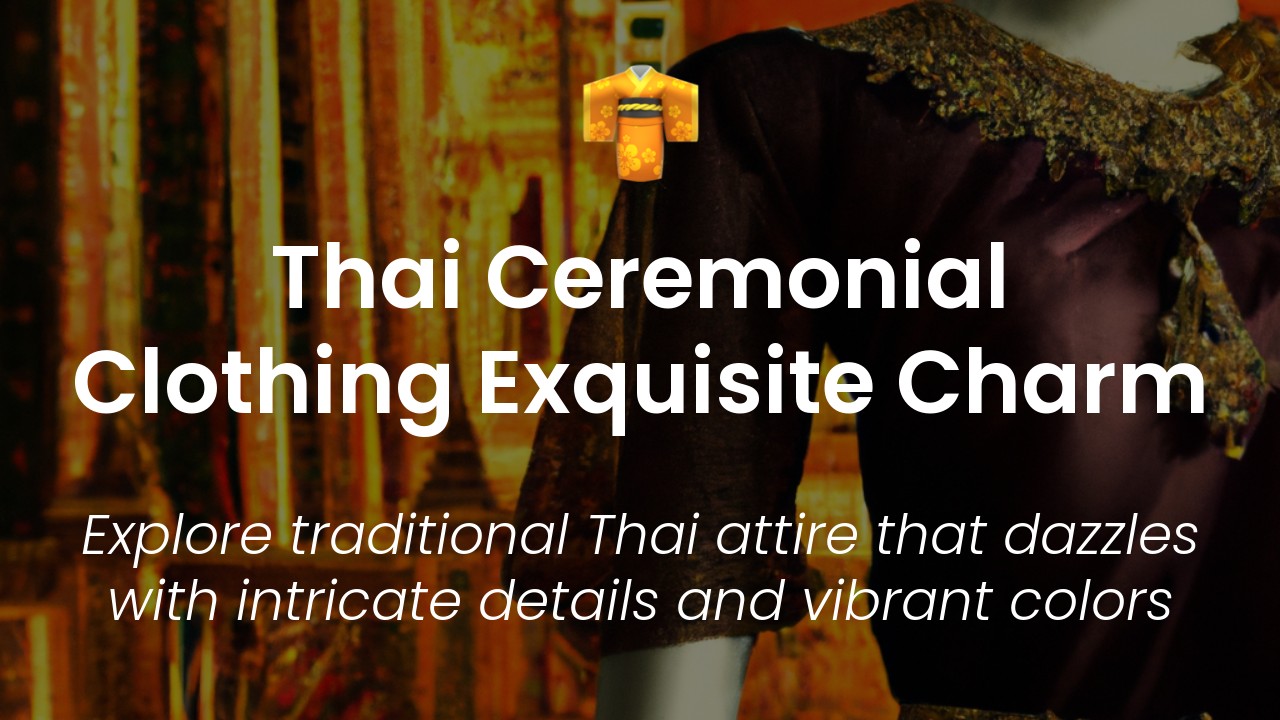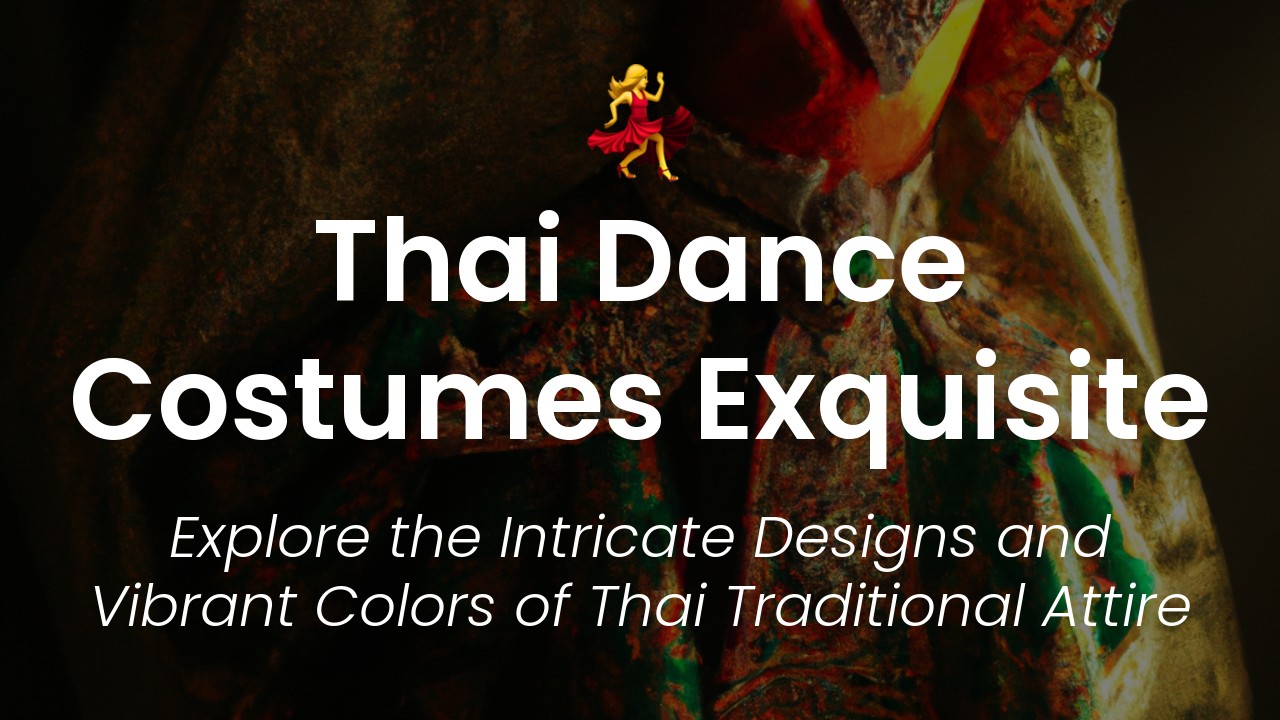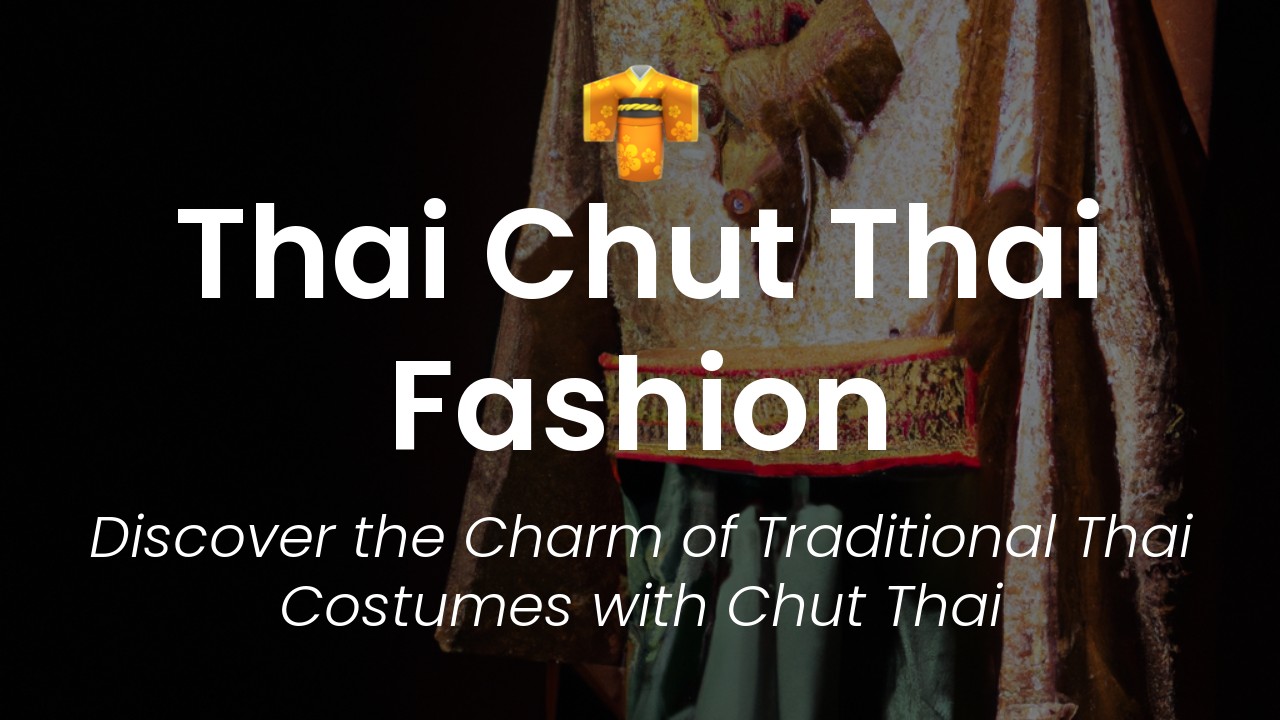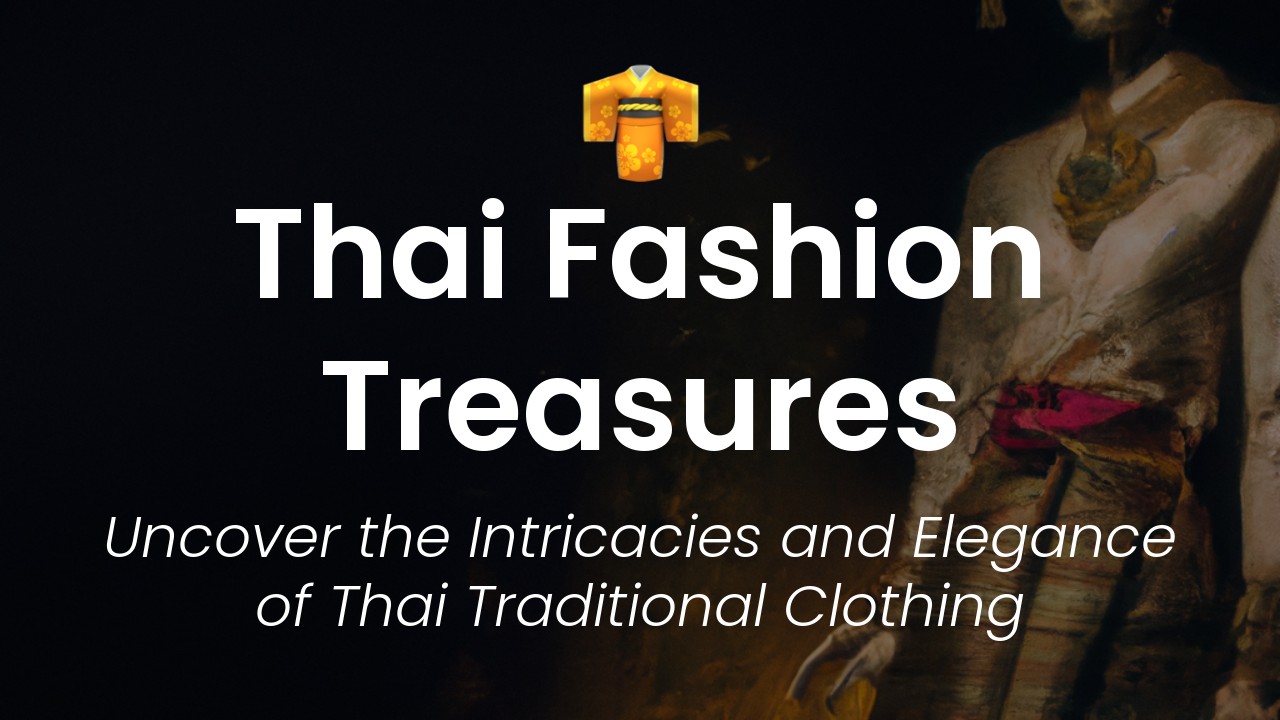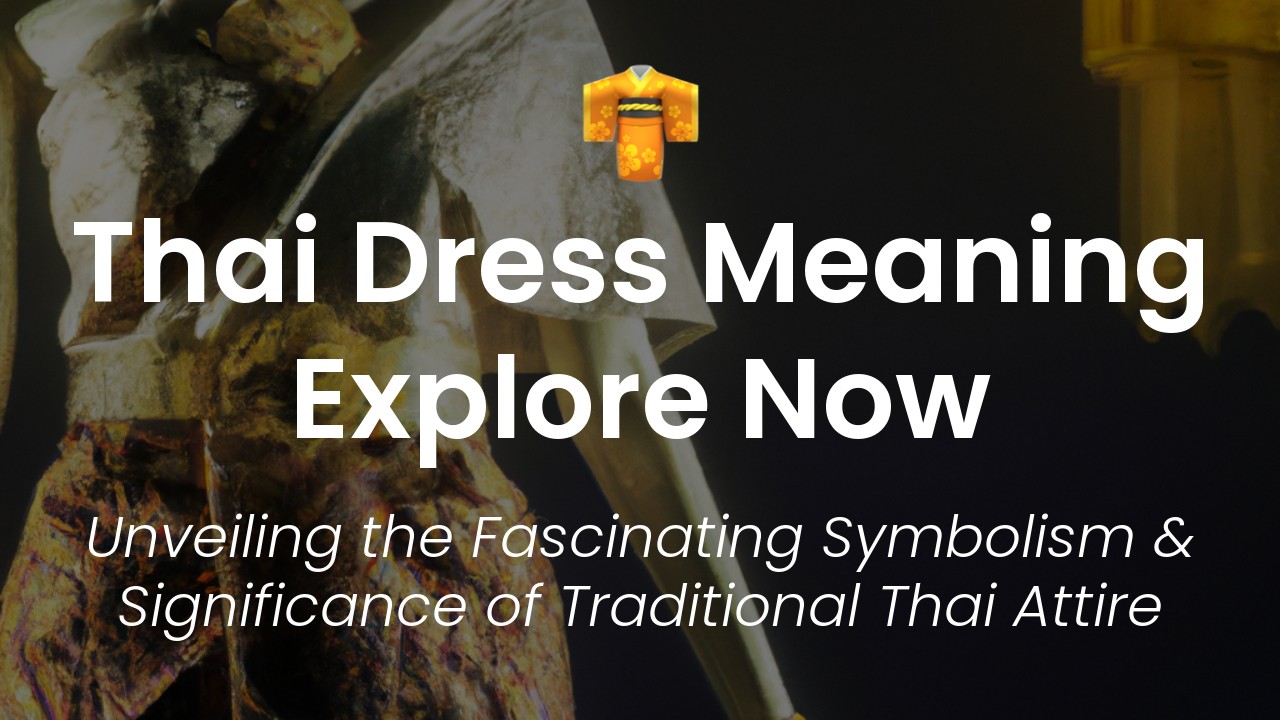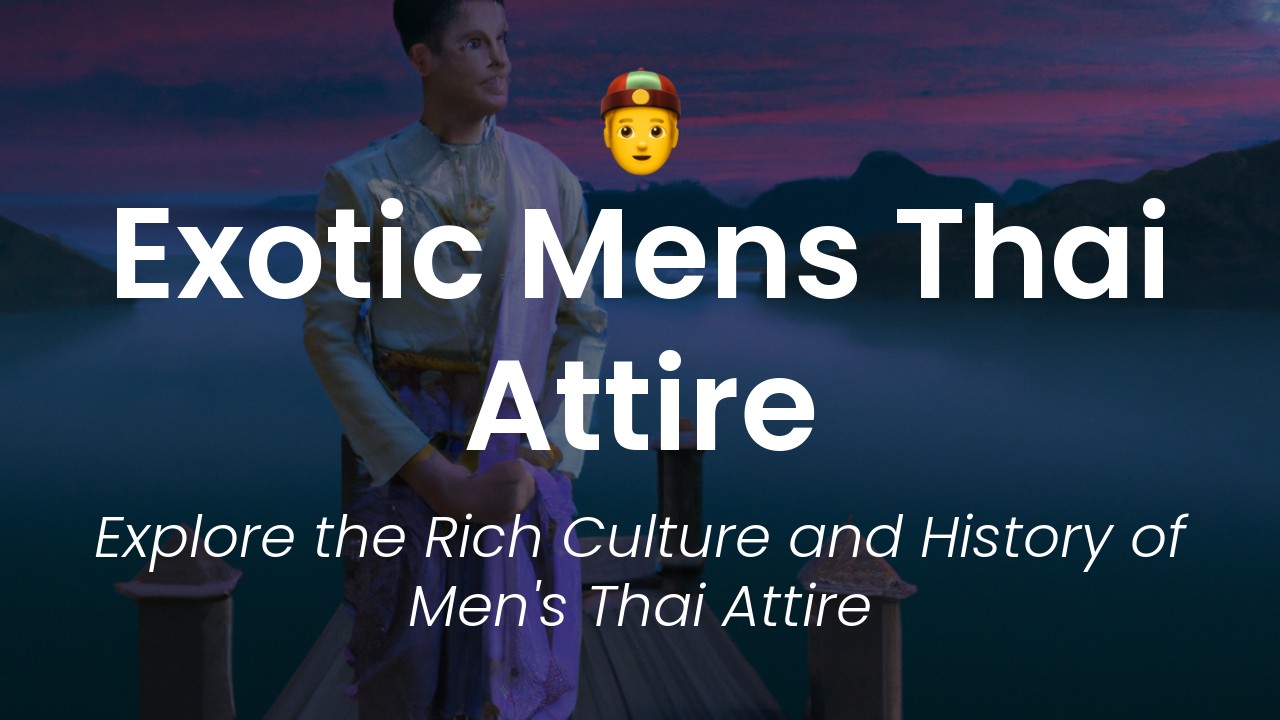As a Thai woman, I have a deep appreciation for the beauty and significance of traditional Thai clothing. Our ceremonial attire is particularly special, as it embodies the rich history, culture, and art of Thailand. In this blog post, I want to take you on a journey to discover the exquisite charm of Thai ceremonial clothing.
To begin, it’s important to understand the diversity of Thai clothing. Thailand is home to over 70 distinct ethnic groups, each with its own unique styles and traditions. Within these groups, there are also different types of clothing for various occasions such as weddings, funerals, temple visits, and festivals. Despite this diversity, what unites Thai ceremonial clothing is its elegance, intricate details, and cultural significance.
Thai ceremonial clothing has a long history dating back to the Siamese court of the Ayutthaya period (1351-1767). The attire of the royal family and the nobility was highly ornate, featuring gold-threaded fabric, elaborate embroidery, and precious gemstones. It was a symbol of power, wealth, and status. Over time, these styles and techniques were passed down to the common people who also began incorporating their own regional flair into the clothing. Today, Thai ceremonial clothing is still worn with great pride and respect as a way to honor our cultural heritage and celebrate important milestones in life.
Traditional Thai Clothing
The traditional Thai attire has always been considered as an important representation of the Thai culture, which has played an essential role in many aspects of daily life, such as religious and social ceremonies. Thai clothing is distinguished by its intricate designs, vivid colors, and elaborated patterns, which make it an excellent example of the country's artistic heritage. The traditional Thai dress consists of two main garments, which are the "Pha Sin" or wrap-around skirt for women and the "Pha Nung" for men.
The Pha Sin is a long piece of cloth that can vary in size and is wrapped between the legs and around the waist, secured in place by a fabric belt or sash. The design of the fabric typically features intricate details depicting mythological and natural scenes, accompanied by vibrant color combinations of red, gold, and green. The Pha Sin is usually crafted from silk, which adds an additional element of luxury and softness to the garment.
Men's traditional clothing, on the other hand, comprises of a "Pha Nung," similar to the wrap-around skirt for women, and a shirt, usually made from cotton or silk. The Pha Nung is a long cloth that is wrapped around the waist and hips and then secured by a belt, creating a breechy sensation. It usually comes in darker colors such as black, brown, or navy blue, coupled with a white shirt.
Meaning Behind Ceremonial Garments
Ceremonial Thai garments are more elaborate than the everyday traditional attire, with intricate embroidery and precious stones designed to impress and create a more formal atmosphere. Thai ceremonial clothing has a special meaning for each occasion and plays an essential role in emphasizing the importance of cultural traditions.
One of the most prominent ceremonial fabrics is the "Pha Mongkol," which consists of a single piece of diamond-shaped cloth that is draped over the shoulder and back, secured by a knot at the chest. The Pha Mongkol is usually only worn during the most important ceremonies, such as weddings, funerals, and royal occasions. The fabric is crafted using specifically chosen colors that symbolize purity, nobility, and monetary abundance, varying from region to region.
Another stunning piece of ceremonial attire is the "Chut Thai Chakkri," created during the reign of King Rama V, as a tribute to the European influence on Thai culture. The Chut Thai Chakkri is a combination of the King's formal English attire with traditional Thai touches, such as the Pha Nung and a white fan. The Chut Thai Chakkri is typically worn by men on royal occasions or for other formal events.
Styles for Different Occasions
Thai clothing varies in style and material according to the occasion and region. For instance, the "Sabai," a broad piece of cloth wrapped around the chest and shoulders, is mostly used in the northern region of Thailand. It is usually made from cotton or silk, and the colors and designs are influenced by the surrounding nature.
Similarly, in the southern region of Thailand, "Thowes," which are sarongs or tubular fabric, wrapped around the waist, are preferred, while in the central region of the country, the "Chong Kraben" is worn as traditional attire for men. The Chong Kraben is a comfortable, airy, but straightforward outfit that provides flexibility and ease of movement.
Features and Accessories of Thai Attire
Accessories play a vital role in traditional Thai attire, with a vast selection of items available to complement and complete the outfit. One of the most popular accessories is the "Kanok," a golden or silver headpiece that features swirling patterns and peacock feathers, which signify power and beauty.
Another often used accessory is the "Chalong," which is a gold or silver bracelet that is worn around the wrist. Thai people believe that wearing a Chalong enhances the wearer's spirituality and brings luck, protection, and healing.
When it comes to footwear, "Thong Sala," or flat sandals, are commonly worn by both men and women. They are versatile, sturdy, and comfortable, making them suitable for various occasions.
Color Symbolism of Thai Ceremonial Clothing
Colors play an integral part in Thai attire symbolism and are often chosen for their deep-rooted cultural values. For example, gold represents royalty, wealth, and prosperity, while red is a symbol of good fortune, joy, and happiness. Green and blue are associated with nature and spiritual harmony, while white is a representation of purity and innocence.
Colors in ceremonial clothing can also be chosen to signify specific life events. For example, black is worn during funerals and mourning periods, while white is reserved for weddings and religious ceremonies.
Modern Interpretations and Trends
Recently, Thai traditional clothing has undergone various modern adaptations and interpretations to suit the changing times. For example, Thai silk fabrics have become popular materials for contemporary fashion designers, creating new trends and designs that incorporate traditional Thai elements.
Moreover, modern brides in Thailand often incorporate the traditional Pha Sin in their wedding dress, adding a touch of elegance and sophistication to their special day. Contemporary Thai fashion now features traditional garments with a modern twist, mixing traditional silhouettes with modern fabrics and stylistic elements.
Appreciating the Culture Through Clothing
In conclusion, Thai traditional clothing is an essential aspect of the country's cultural heritage and an impressive representation of its artistic traditions. Thai ceremonial clothing holds a special place in the hearts of Thai people, and the intricate designs and bright colors embody deep-rooted meanings that symbolize wealth, power, joy, and spiritual harmony.
By appreciating the traditions and meanings behind Thai clothing, people can gain a better understanding of the country's culture and enrich their travel experience. Wearing traditional Thai outfits can also be a way to respect and honor the culture while having fun and creating lasting memories.

